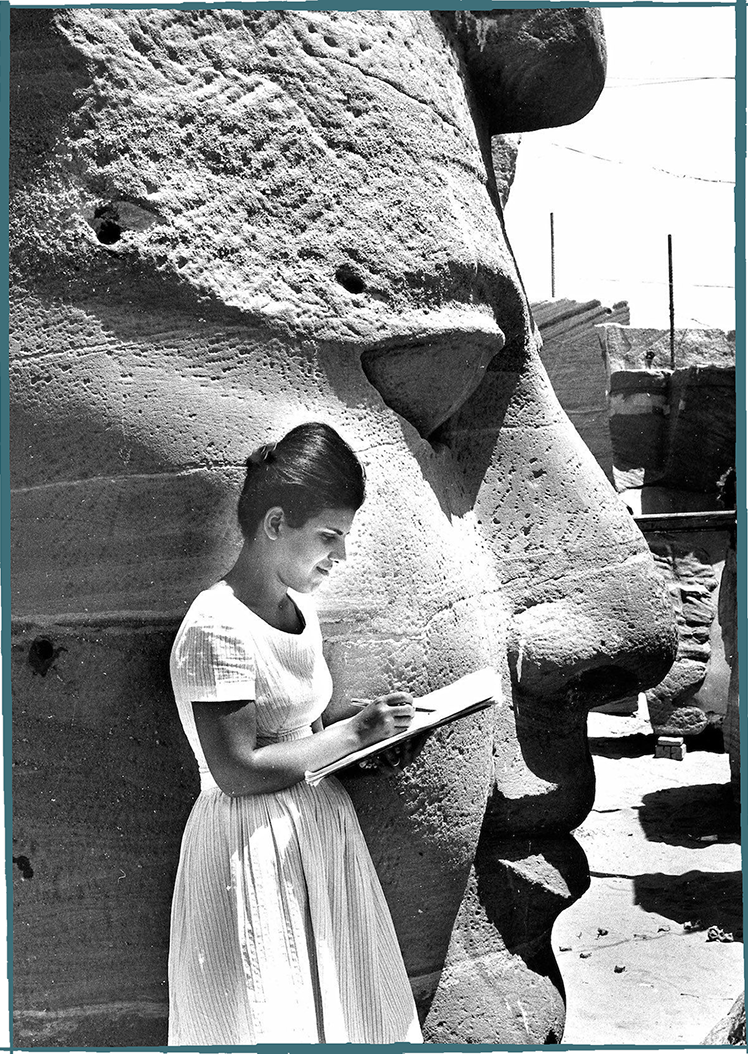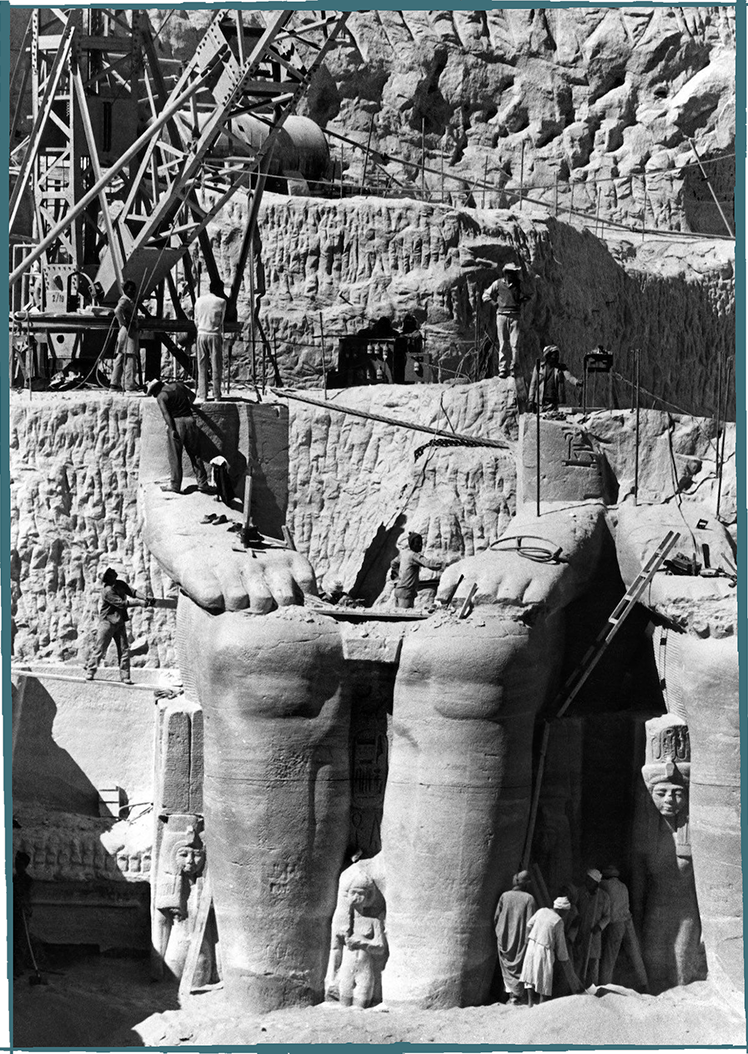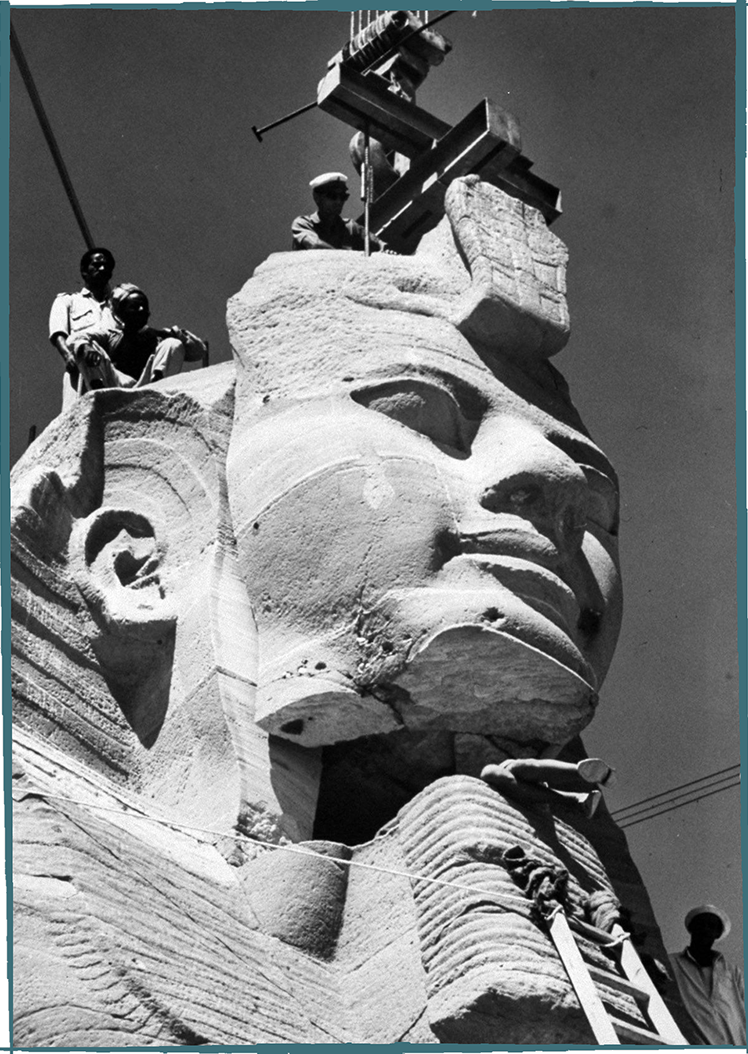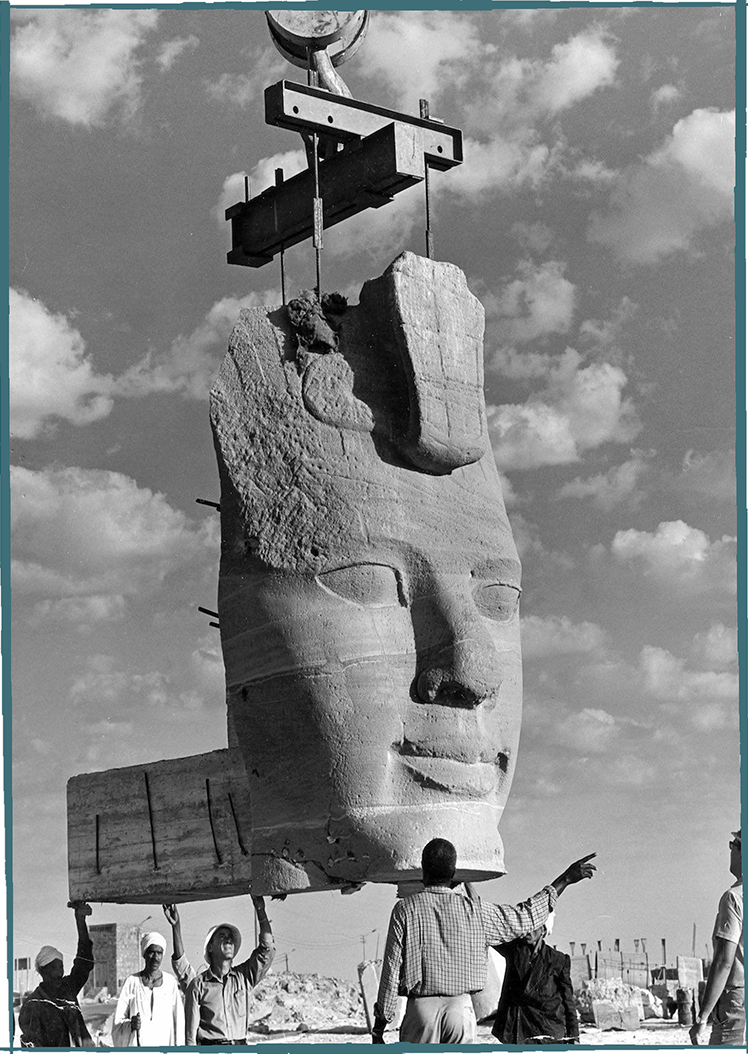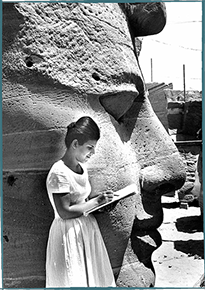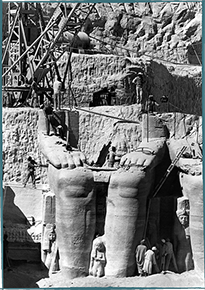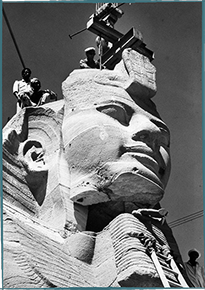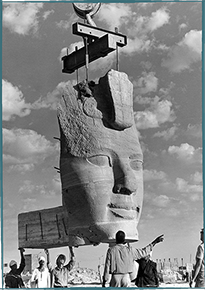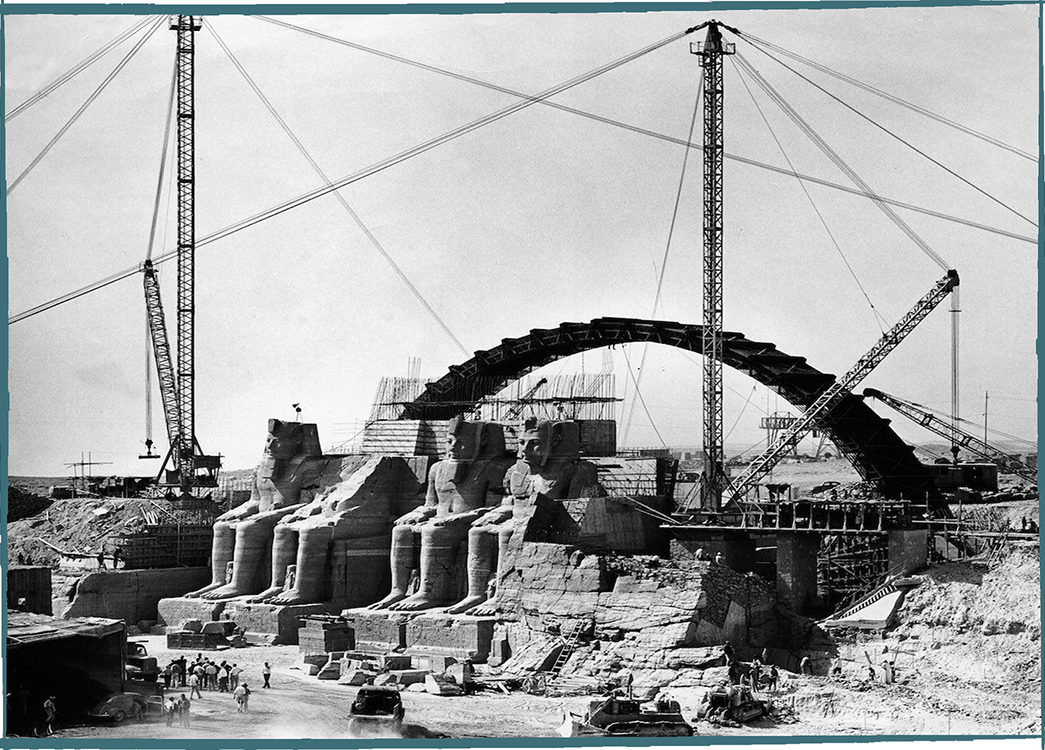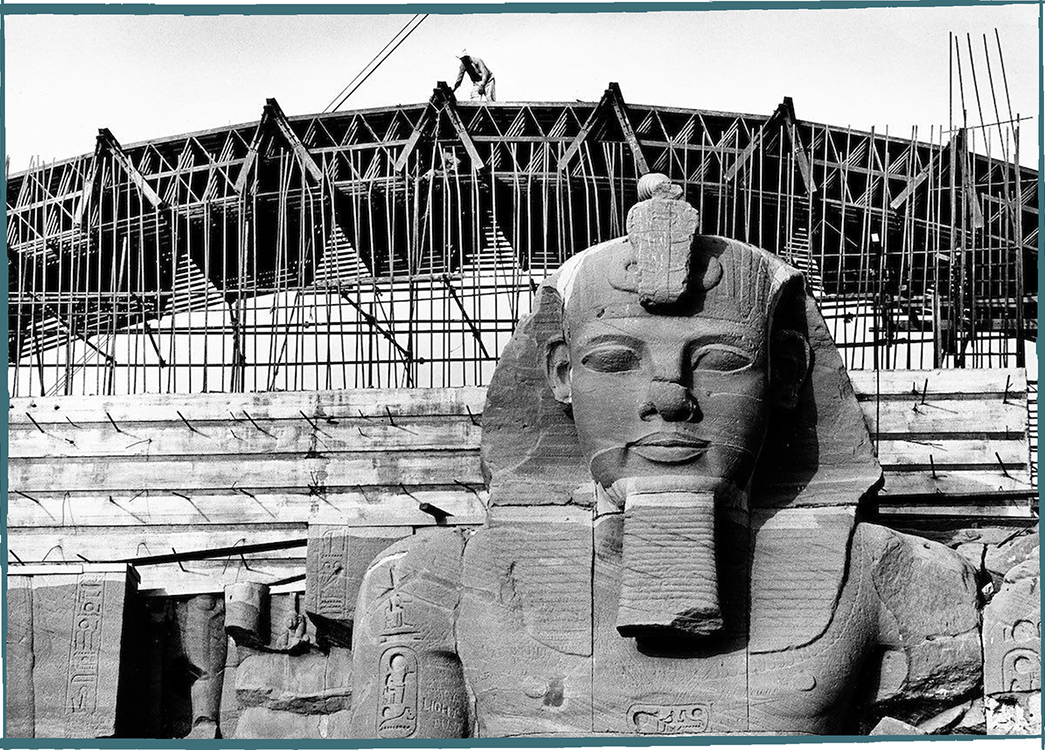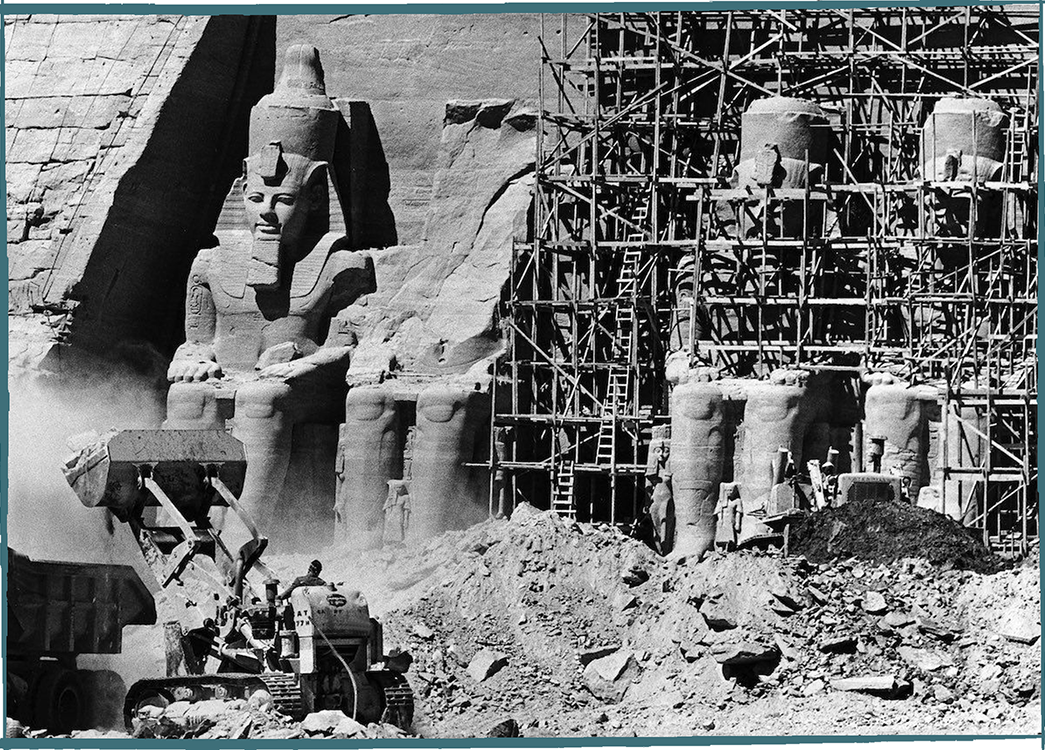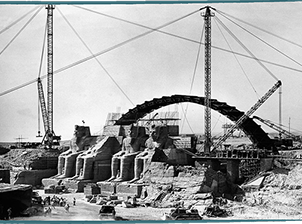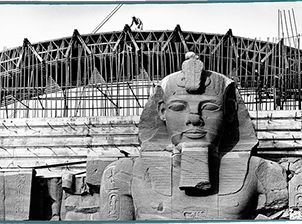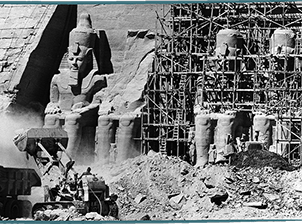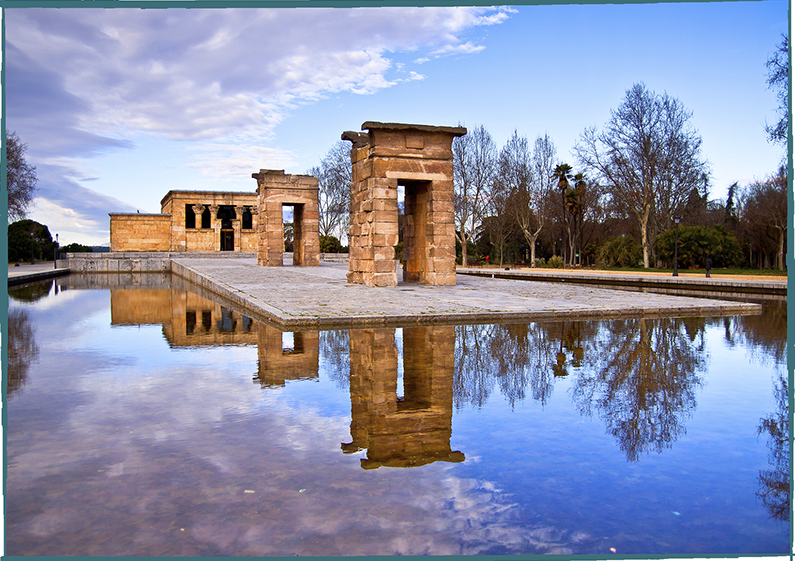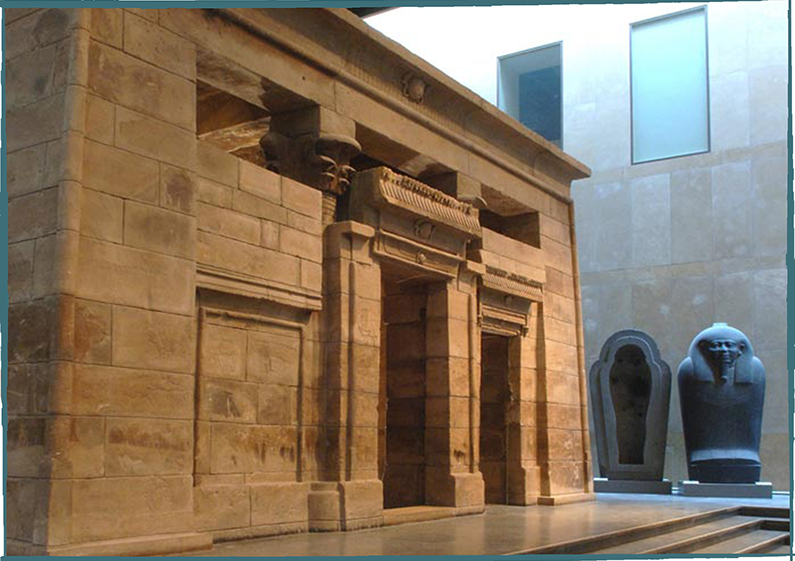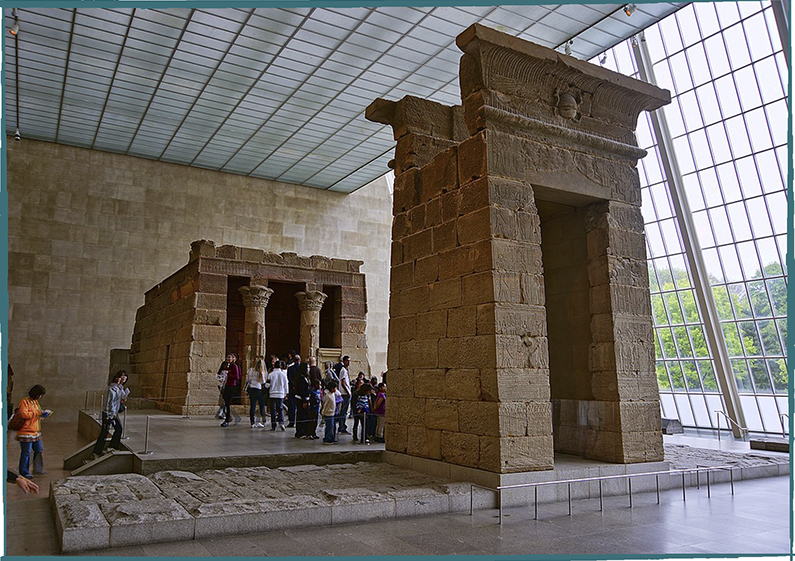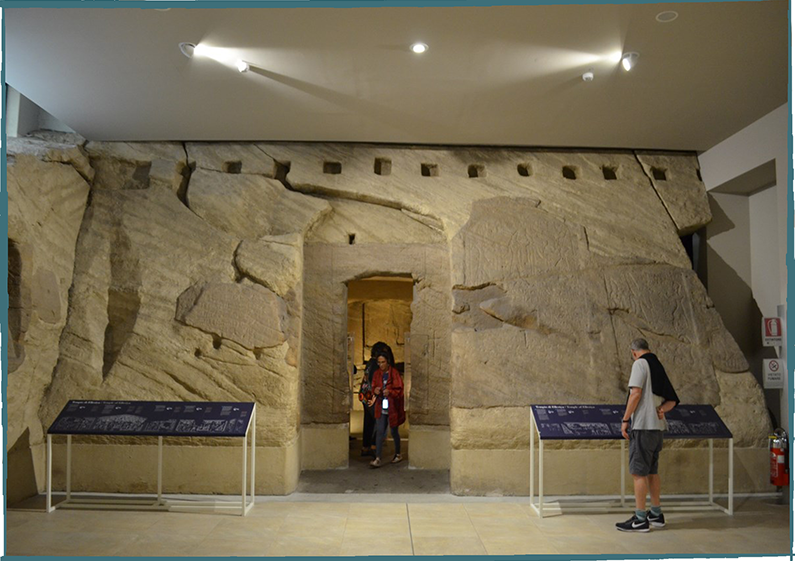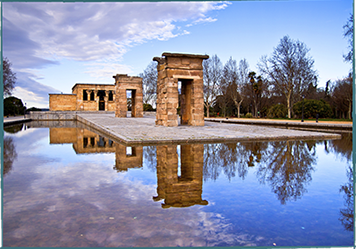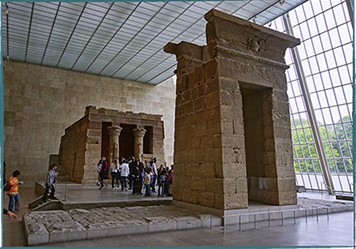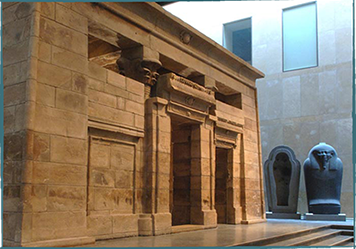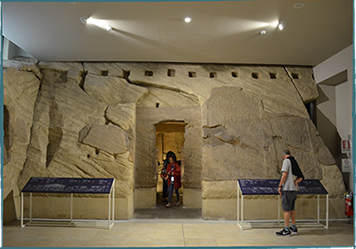ABU SIMBEL
reconstruction
The temples of Abu Simbel, discovered two centuries by John Lewis Burckhardt Swiss and Italian Giovanni Battista Belzoni 290 kilometres from Aswan, in order to more complex save the most grandiose monument carved out of rock. Various projects, it was proposed as the isolate it in a kind of aquarium glass lifts up to the surface but finally Egypt chose the rescue plan for the signing of Swedish engineers Vattenbyggnadsbyran. The great Temple of Ramsés II would be cut into pieces of a giant puzzle and reconstituted at the top of the plateau, above the maximum dimension that will reach the waters.
That 1960 started the largest archaeological salvage of all time. With support from Poland, Italy, Checolovaquia, the Soviet Union, Austria, France, Germany, Spain, United States, the Netherlands, Great Britain, Switzerland and Finland which have joined the effort to Egyptian to save the Nubian heritage from oblivion and destruction.
In November, 1963 the works began, with the construction to protect the temples of the ascent of the waters of the lake. After the previous operations of installing a drainage system, raising scaffoldings, installing a few enormous alleys of aluminium to accede to his interior and to cover the fronts with sand and curtains of iron to protect them from possible hurts, in May, 1965 there was cut the first one of the blocks, the "GA1A01", which logically would be one of the last ones in recovering his position in the new emplacement.Engineers and workers of five countries were employed at the hard local conditions to fragment accurately surgical the set of sandstone in 1.036 blocks of between 7 and 30 tons each one.
Powerful derricks moved the blocks up to his new location where the puzle re-consisted carefully, covering the signs of the cuts with clays, paintings and sands in such a way that today scarcely they are perceptible. These works finished in September, 1967.
The last stage consisted of raising on every temple a few gigantic domes capable of supporting the rocks that would cover the set, simulating the original work though some kind of minors that the primitive ones. On September 22, 1968 the conclusion of the project was celebrated by a solemn ceremony.
Forty eight countries, between them Spain, contributed to the financing of this titanic work that cost 41,7 million dollars. Egypt took charge of the half of the expenses.
In gratefulness Egypt donated four temples to the principal countries that took part: Spain received the donation of Debod's Temple that gave the orders the king constructed meroita Adijalamani at the beginning of the 2nd century B.C., the Netherlands received Taffa's temple, Dendur's Temple travelled up to the Metropolitan Museum of Art of New York, and Al Ellesyia's Temple temple to Italy.









